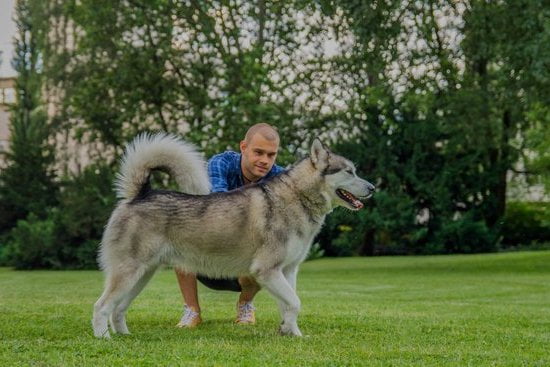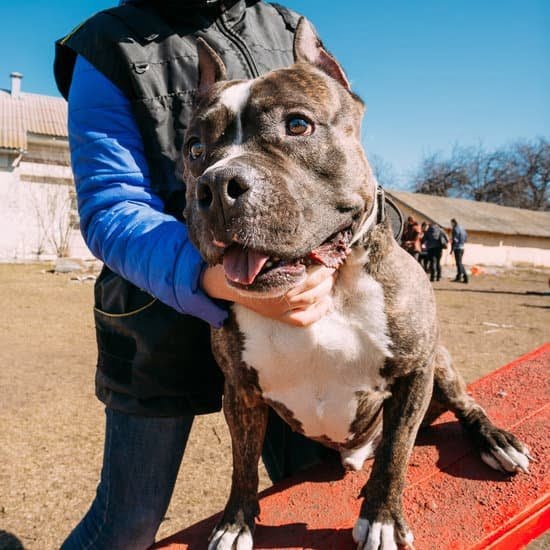People who suffer from Post-Traumatic Stress Disorder (PTSD) often find themselves struggling with a range of symptoms that can significantly impact their daily lives. From anxiety and flashbacks to difficulty sleeping and mood swings, the effects of PTSD are far-reaching and challenging to manage alone. This is where PTSD dogs come in – specially trained animals that provide invaluable support and comfort to individuals experiencing this mental health condition.
PTSD, a mental health disorder triggered by a traumatic event, can have lasting effects on an individual’s well-being. Understanding the complexities of PTSD is essential in recognizing the need for effective interventions that go beyond traditional therapy. Emotional support animals, such as PTSD dogs, play a crucial role in helping individuals cope with the debilitating symptoms of this condition by providing unconditional companionship and assistance.
These remarkable animals undergo specialized training to equip them with the necessary skills to help their owners navigate the challenges of daily life with PTSD. From offering emotional support during anxiety attacks to creating a sense of safety and security in overwhelming situations, PTSD dogs perform a range of tasks designed to mitigate the impact of the condition on their owners’ lives.
Through their unwavering dedication and unique abilities, these dogs offer a lifeline for those struggling with PTSD, underscoring the profound impact they have on mental health therapy.
How PTSD Affects Individuals
Understanding PTSD
Post-Traumatic Stress Disorder (PTSD) is a mental health condition that can develop after experiencing or witnessing a traumatic event. Individuals with PTSD may struggle with symptoms such as flashbacks, nightmares, severe anxiety, and uncontrollable thoughts related to the traumatic experience. These symptoms can have a significant impact on their daily life, affecting their ability to function at work, school, and in relationships.
The Role of Animals in Therapy
Emotional support animals have been recognized for their therapeutic benefits in helping individuals cope with various mental health conditions, including PTSD. Animals like dogs provide comfort, companionship, and emotional support to their owners, helping them manage stress and anxiety. For individuals struggling with PTSD, having a specially trained dog can make a profound difference in their overall well-being and quality of life.
Tasks Performed by PTSD Dogs
A PTSD dog is trained to provide specific assistance to individuals with post-traumatic stress disorder. These specially trained animals can perform a variety of tasks to help their owners manage their symptoms and navigate daily life more effectively.
Some tasks that PTSD dogs are trained to do include alerting their owners to signs of distress or impending panic attacks, creating physical barriers between their owners and others in crowded or triggering environments, and providing emotional support during moments of distress. These tasks are designed to help individuals with PTSD feel safe, supported, and able to engage more fully in daily activities despite the challenges they may face.
The Role of Animals in Therapy
Animals have long been recognized for their therapeutic benefits on mental health, providing comfort and support to individuals facing various challenges. In the context of post-traumatic stress disorder (PTSD), emotional support animals play a crucial role in helping individuals cope with their symptoms and navigate through daily life. These specially trained animals, including dogs, are not only companions but also provide valuable emotional assistance to those experiencing PTSD.
The Benefits of Emotional Support Animals for Individuals With PTSD Include
- Offering unconditional love and companionship, which can help reduce feelings of loneliness and isolation commonly experienced by those with PTSD.
- Providing a sense of security and comfort, allowing individuals to feel more at ease in their surroundings.
- Helping to minimize anxiety and panic attacks by offering a calming presence and physical touch when needed.
The connection between humans and animals has been shown to have a positive impact on mental well-being, making emotional support animals a valuable resource for individuals struggling with PTSD. In particular, PTSD dogs are specifically trained to provide targeted support to their owners, assisting them in managing their symptoms and improving their overall quality of life.
What Is a PTSD Dog Trained to Do
- Recognize signs of distress or anxiety in their owner and respond accordingly by providing comfort and assurance.
- Assist in creating personal space in crowded or overwhelming situations to help alleviate feelings of stress or agitation.
- Interrupt patterns of negative behavior or thoughts by engaging their owner in activities or redirecting their focus.
Through specialized training programs, PTSD dogs are equipped with the skills necessary to fulfill these tasks effectively. Ultimately, these specially trained animals offer invaluable support to individuals struggling with PTSD, contributing significantly to their healing journey and overall well-being.
What Is a PTSD Dog
PTSD, or Post-Traumatic Stress Disorder, is a mental health condition that can develop in individuals who have experienced traumatic events. Symptoms of PTSD can include flashbacks, nightmares, severe anxiety, and uncontrollable thoughts about the traumatic event. These symptoms can significantly impact a person‘s daily life, making it challenging to function normally in various situations.
One method of therapy that has shown remarkable effectiveness in helping individuals cope with PTSD is the use of specially trained dogs. These animals, known as PTSD dogs or service dogs for individuals with PTSD, are trained to provide emotional support and assistance to their owners. The key purpose of a PTSD dog is to help their owner manage the symptoms of PTSD and navigate through their daily life with more ease and confidence.
In terms of what is a PTSD dog trained to do, these animals undergo rigorous training to learn specific skills and commands that can aid their owners in times of distress. Some tasks performed by PTSD dogs include providing comfort during anxiety or panic attacks, waking their owners from nightmares, creating physical space between their owners and others when needed, retrieving medication or personal items on command, and even guiding them through crowded or high-stress environments.
| PTSD Dog Tasks | Description |
|---|---|
| Provide comfort during anxiety attacks | Offering emotional support through physical contact and calm presence |
| Guiding through stressful environments | Assisting their owner in navigating crowded or overwhelming places safely |
| Retrieving medication or personal items | Bringing essential items to their owner when needed during episodes of distress |
Training Process for PTSD Dogs
Introduction to Training Process
Training a dog to assist individuals with PTSD requires specialized skills and techniques to ensure that the animal can provide the necessary support. These PTSD dogs undergo rigorous training to become reliable companions for their owners, offering comfort and assistance during challenging moments. The training process is essential in preparing these animals to respond effectively to their handlers’ needs and provide emotional support when required.
Skills Taught During Training
During the training process, PTSD dogs are taught a variety of skills that enable them to assist individuals experiencing symptoms of PTSD. These skills may include alerting their owners about oncoming panic attacks or nightmares, creating physical space in crowded areas, providing deep pressure therapy during moments of distress, and even fetching medications when needed.
Through positive reinforcement techniques, these dogs learn how to respond appropriately to their handler’s cues and signals, making them invaluable companions in managing the challenges of living with PTSD.
Commands for Providing Support
In addition to specific skills, PTSD dogs are also trained to recognize and respond to verbal commands from their handlers. Common commands taught during training include “seek help” for guiding the owner towards a support person or exit in times of distress, “block” for creating physical barriers between the owner and potential triggers, “watch my back” for providing a sense of security in public spaces, and “bring it” for retrieving essential items such as medication or comfort objects.
By following these commands, PTSD dogs can offer practical assistance and emotional support that significantly improves the quality of life for individuals struggling with PTSD.
Tasks Performed by PTSD Dogs
PTSD dogs are specially trained to assist individuals who are suffering from post-traumatic stress disorder, a mental health condition that can greatly impact their daily lives. These dogs are not just pets; they play a crucial role in providing support and comfort to their owners in various ways. Here are some specific tasks performed by PTSD dogs:
- Providing physical comfort: One of the main tasks of PTSD dogs is to provide physical comfort to their owners. This can include cuddling, leaning against them, or even lying on top of them during moments of distress.
- Alerting to triggers: PTSD dogs are trained to recognize signs of distress or anxiety in their owners and alert them before a potential trigger occurs. This early warning system can help individuals better manage their symptoms and prevent a full-blown episode.
- Guiding their owners: In crowded or overwhelming situations, PTSD dogs can guide their owners through crowds or lead them to safety. This provides a sense of security and peace of mind for individuals with PTSD.
These tasks may seem simple, but they make a significant difference in the lives of those struggling with PTSD. The presence of a well-trained PTSD dog can reduce anxiety, provide emotional support, and improve overall well-being for individuals dealing with this challenging mental health condition. What is a PTSD dog trained to do goes beyond just being a companion; they are invaluable partners in helping their owners navigate through the difficulties brought about by PTSD.
Difference Between Service Dogs and Emotional Support Animals
PTSD dogs, also known as psychiatric service dogs, are specially trained animals that provide crucial support to individuals suffering from post-traumatic stress disorder. These dogs undergo extensive training to assist their owners in managing the symptoms of PTSD and navigating through daily life more effectively.
One of the key distinctions between PTSD dogs and emotional support animals is the level of training they receive. While emotional support animals provide comfort and companionship to individuals with mental health issues, PTSD dogs are trained to perform specific tasks that directly help their owners cope with the symptoms of PTSD.
These tasks can include providing a sense of security in public spaces, interrupting anxiety attacks, waking up their owners from nightmares, and guiding them home during moments of dissociation.
In addition to the specialized training they receive, PTSD dogs also have legal rights that differ from those of emotional support animals. In many cases, PTSD dogs are considered service animals under the Americans with Disabilities Act (ADA), granting them access rights in public places such as restaurants, stores, and transportation services. This legal recognition acknowledges the vital role that these highly trained animals play in supporting individuals with PTSD in their daily lives.
| Key Points | Details |
|---|---|
| Definition | PTSD dogs are specially trained animals that provide support to individuals suffering from post-traumatic stress disorder. |
| Training | PTSD dogs undergo extensive training to perform specific tasks that help their owners manage symptoms and navigate daily life effectively. |
| Legal Rights | PTSD dogs are often considered service animals under the ADA, granting them access rights in public spaces. |
Personal Stories
When it comes to individuals dealing with post-traumatic stress disorder (PTSD), the presence of a specially trained dog can make a world of difference in their everyday life. These incredible animals are not just pets; they are companions that provide vital support to their owners who are navigating the challenges of this mental health condition.
So, what is a PTSD dog trained to do? These dogs undergo intensive training to learn a variety of skills and commands aimed at providing emotional assistance and comfort to individuals struggling with PTSD.
One of the key tasks that PTSD dogs are trained to perform is grounding their owners during moments of distress or anxiety. For example, these dogs can offer tactile stimulation by nuzzling or nudging their owner when they sense signs of an impending panic attack.
This physical contact serves as a calming mechanism and helps the individual refocus on the present moment. Additionally, PTSD dogs are taught to recognize signs of hyperarousal or hypervigilance in their owners and intervene by providing a sense of security through their presence.
Moreover, PTSD dogs are also trained to create physical boundaries between their owner and others in crowded or triggering environments. By standing in front of, behind, or beside their owner, these dogs act as a buffer that prevents strangers from getting too close or approaching them unexpectedly.
This sense of protection can greatly reduce feelings of vulnerability and unease, allowing individuals with PTSD to feel more secure and at ease in various social situations. Overall, the impact that PTSD dogs have on the lives of their owners goes beyond simple companionship – they provide invaluable support that aids in managing symptoms and improving overall well-being.
Conclusion
In conclusion, PTSD dogs play a vital role in providing support and assistance to individuals struggling with post-traumatic stress disorder. These specially trained animals are not only companions but also reliable partners in helping manage the symptoms of PTSD and navigate daily life challenges. What is a PTSD dog trained to do? They are trained to offer comfort, provide emotional support, and perform specific tasks that help alleviate the impact of the condition on their owners.
The bond between a PTSD dog and its owner goes beyond mere companionship; it is a unique partnership built on trust, understanding, and unconditional love. Through their training process, these remarkable animals learn to recognize signs of distress, offer physical comfort during moments of anxiety or panic attacks, and even create a sense of security for their owners in crowded or triggering environments.
Furthermore, PTSD dogs are equipped with essential skills and commands that allow them to intervene effectively in high-stress situations and provide the necessary support their owners need.
Personal stories shared by individuals who have benefited from having a PTSD dog by their side serve as powerful testimony to the profound impact these animals have on mental health. Whether it’s helping someone regain their sense of independence, reducing feelings of isolation and loneliness, or simply being a constant source of comfort through difficult times, PTSD dogs contribute significantly to enhancing the overall well-being of those living with post-traumatic stress disorder.
In essence, these incredible animals serve as guardians of both physical and emotional wellness for their owners, underscoring the invaluable role they play in mental health support.
Frequently Asked Questions
What Task Does a PTSD Service Dog Do?
A PTSD service dog is trained to provide emotional support and assistance to individuals suffering from post-traumatic stress disorder. These dogs can help their owners by providing a sense of security, interrupting nightmares or panic attacks, and encouraging them to engage in social activities.
Can You Train a Dog to Help With PTSD?
Yes, it is possible to train a dog to help with PTSD. Training a service dog for PTSD involves teaching the dog specific tasks tailored to the needs of the individual with PTSD. This training typically includes skills such as retrieving medication, providing deep pressure therapy during anxiety episodes, and creating physical barriers in public spaces.
What Breed Makes the Best PTSD Service Dog?
While any breed of dog can potentially become a successful PTSD service dog, some breeds are commonly preferred due to their temperament and characteristics that make them well-suited for the role. Breeds such as Labrador Retrievers, Golden Retrievers, German Shepherds, and Standard Poodles are often selected for their intelligence, loyalty, calm demeanor, and trainability.
Ultimately, the best breed for a PTSD service dog depends on the individual’s specific needs and preferences.

Welcome to the blog! I am a professional dog trainer and have been working with dogs for many years. In this blog, I will be discussing various topics related to dog training, including tips, tricks, and advice. I hope you find this information helpful and informative. Thanks for reading!





